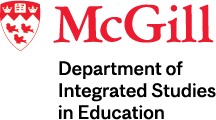Supporting Prospective Teachers to Engage Students in Constructing and Reasoning about Mathematical Definitions / Soutenir les enseignants en formation à guider des élèves dans la construction et le raisonnement sur les définitions mathématiques
Mathematical definitions are foundational to the mathematics standards in Quebec and North America, playing a key role in how students learn mathematics, engage in mathematical ways of thinking, and participate in communicating mathematical ideas (e.g., Ministère de L’Éducation, du Loisir et du Sport, 2006; National Governors Association Center for Best Practices & Council of Chief State School Officers, 2010). Nonetheless, traditional forms of instruction in definition, focused on memorization, have been shown to be inadequate for supporting students’ learning (e.g., Dickerson & Pitman, 2016; Roh, 2008; Vinner, 1991; Yanik, 2014).
 In response to this problem, educational reforms and research have encouraged new forms of instruction to support students’ learning of mathematical definitions. Instead of focusing on memorization through teacher-centered lectures, teachers are to provide students opportunities to construct definitions and to reason about definitions (de Villiers, 1998; Keiser, 2000). Such instruction has been shown to support students to develop deeper mathematical understanding, greater agency, and an increased ability to communicate mathematically (e.g., Borasi, 1992; Lehrer, Jacobson, Kemeny, & Strom, 1999; Kobiela & Lehrer, 2015; Zandieh & Rasmussen, 2010; Zaslavsky & Shir, 2005). Despite this potential, teachers’ mathematics instruction remains mostly lecture-centered, particularly in Anglophone Quebec (e.g., Manuel, Savard, & Reid, 2015). More research is needed to understand how to support teachers in learning how to implement these methods.
In response to this problem, educational reforms and research have encouraged new forms of instruction to support students’ learning of mathematical definitions. Instead of focusing on memorization through teacher-centered lectures, teachers are to provide students opportunities to construct definitions and to reason about definitions (de Villiers, 1998; Keiser, 2000). Such instruction has been shown to support students to develop deeper mathematical understanding, greater agency, and an increased ability to communicate mathematically (e.g., Borasi, 1992; Lehrer, Jacobson, Kemeny, & Strom, 1999; Kobiela & Lehrer, 2015; Zandieh & Rasmussen, 2010; Zaslavsky & Shir, 2005). Despite this potential, teachers’ mathematics instruction remains mostly lecture-centered, particularly in Anglophone Quebec (e.g., Manuel, Savard, & Reid, 2015). More research is needed to understand how to support teachers in learning how to implement these methods.
To address this need, this research project aims to support prospective teachers to learn to engage students in constructing and reasoning about mathematical definitions (what we term defining). This two-year design study (Cobb, Confrey, diSessa, Lehrer, & Schauble, 2003) will take place in a university mathematics teaching methods course for elementary prospective teachers. The designed supports will include two components: a) activities to help prospective teachers understand the nature of mathematical definitions and defining and b) opportunities to practice engaging students in definition construction, first to their peers, and then to a small group of elementary students.
This study is guided by the following questions:
1) How do prospective teachers’ understandings of the nature of defining and definitions and their practices of orchestrating definitional discussions change over the course of instruction?
2) How do the designed supports contribute to changes in prospective teachers’ practices and understanding?
Data collected will include pre- and post-interviews and video recordings of the methods classes and of the prospective teachers teaching. Results will be analyzed to document changes in thinking and teaching practices. Our hope is that the resulting design will be used in teacher education and professional development programs across Quebec and North America. Results will also contribute to understanding novice teachers’ learning of teaching practices.
This project is funded by the Fonds de Recherche Québec Société et Culture (2017-2020).
Contact:
Marta Kobiela, Ph.D.
Assistant Professor, Department of Integrated Studies in Education (DISE)
Faculty of Education, McGill University
Department of Integrated Studies in Education
3700 McTavish
Montreal, Quebec H3A 1Y2
marta.kobiela [at] mcgill.ca
(514) 398-4527 Ext. 094466
References:
Borasi, R. (1992). Learning mathematics through inquiry. New Hampshire: Heinemann Educational Books, Inc.
Cobb, P., Confrey, J., diSessa, A. A., Lehrer, R., & Schauble, L. (2003). Design experiments in educational research. Educational Researcher, 32(1), 9-13.
Dickerson, D. S., & Pitman, D. J. (2016). An examination of college mathematics majors’ understandings of their own written definitions. The Journal of Mathematical Behavior, 41, 1-9.
Kobiela, M., & Lehrer, R. (2015). The codevelopment of mathematical concepts and the practice of defining. Journal for Research in Mathematics Education, 46(4), 423-454.
Lehrer, R., Jacobson, C., Kemeny, V., & Strom, D. (1999). Building on children's intuitions to develop mathematical understanding of space. In E. Fennema & T. A. Romberg (Eds.), Mathematics classrooms that promote understanding (pp. 63-87). Mahwah, NJ: Lawrence Erlbaum Associates.
Manuel, D., Savard, A., & Reid, D. A. (2015). Observing teachers: The mathematics pedagogy of Quebec francophone and anglophone teachers. In A. Beckmann, V. Freiman, & C. Michelsen (Eds.), Proceedings of MACAS 2015: International symposium of mathematics and its connections to the arts and sciences (pp. 116-123). Hildesheim, Germany: Franzbecker.
Ministère de L’Éducation, du Loisir et du Sport (MELS) 2006). Programme de formation de l’école québécoise. Québec: Gouvernement du Québec.
National Governors Association Center for Best Practices & Council of Chief State School Officers. (2010). Common core state standards for mathematics. Washington, DC: Authors. Retrieved from http://www.corestandards.org/assets/CCSSI_Math%20Standards.pdf
Roh, K. H. (2008). Students’ images and their understanding of definitions of the limit of a sequence. Educational studies in Mathematics, 69(3), 217-233.
Yanik, H. B. (2014). Middle-school students’ concept images of geometric translations. The Journal of Mathematical Behavior, 36, 33-50.
Zandieh, M., & Rasmussen, C. (2010). Defining as a mathematical activity: A framework for characterizing progress from informal to more formal ways of reasoning. Journal of Mathematical Behavior, 29(2), 57-75.
Zaslavsky, O., & Shir, K. (2005). Students’ conceptions of a mathematical definition. Journal for Research in Mathematics Education, 36(4), 317-346.
